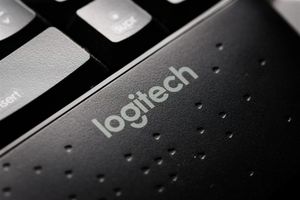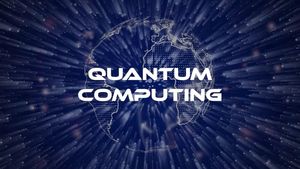
As the artificial intelligence industry continues its relentless expansion, demanding ever more powerful and energy-efficient hardware, all eyes are turning to Wolfspeed (NYSE: WOLF), a critical enabler of next-generation power electronics. The company is set to release its fiscal first-quarter 2026 earnings report on Wednesday, October 29, 2025, an event widely anticipated to offer significant insights into the health of the wide-bandgap semiconductor market and its implications for the broader AI ecosystem. This report comes at a crucial juncture for Wolfspeed, following a recent financial restructuring and amidst a cautious market sentiment, making its upcoming disclosures pivotal for investors and AI innovators alike.
Wolfspeed's performance is more than just a company-specific metric; it serves as a barometer for the underlying infrastructure powering the AI revolution. Its specialized silicon carbide (SiC) and gallium nitride (GaN) technologies are foundational to advanced power management solutions, directly impacting the efficiency and scalability of data centers, electric vehicles (EVs), and renewable energy systems—all pillars supporting AI's growth. The upcoming report will not only detail Wolfspeed's financial standing but will also provide a glimpse into the demand trends for high-performance power semiconductors, revealing the pace at which AI's insatiable energy appetite is being addressed by cutting-edge hardware.
Wolfspeed's Wide-Bandgap Edge: Powering AI's Efficiency Imperative
Wolfspeed stands at the forefront of wide-bandgap (WBG) semiconductor technology, specializing in silicon carbide (SiC) and gallium nitride (GaN) materials and devices. These materials are not merely incremental improvements over traditional silicon; they represent a fundamental shift, offering superior properties such as higher thermal conductivity, greater breakdown voltages, and significantly faster switching speeds. For the AI sector, these technical advantages translate directly into reduced power losses and lower thermal loads, critical factors in managing the escalating energy demands of AI chipsets and data centers. For instance, Wolfspeed's Gen 4 SiC technology, introduced in early 2025, boasts the ability to slash thermal loads in AI data centers by a remarkable 40% compared to silicon-based systems, drastically cutting cooling costs which can comprise up to 40% of data center operational expenses.
Despite its technological leadership and strategic importance, Wolfspeed has faced recent challenges. Its Q4 fiscal year 2025 results revealed a decline in revenue, negative GAAP gross margins, and a GAAP loss per share, attributed partly to sluggish demand in the EV and renewable energy markets. However, the company recently completed a Chapter 11 financial restructuring in September 2025, which significantly reduced its total debt by 70% and annual cash interest expense by 60%, positioning it on a stronger financial footing. Management has provided a cautious outlook for fiscal year 2026, anticipating lower revenue than consensus estimates and continued net losses in the short term. Nevertheless, with new leadership at the helm, Wolfspeed is aggressively focusing on scaling its 200mm SiC wafer production and forging strategic partnerships to leverage its robust technological foundation.
The differentiation of Wolfspeed's technology lies in its ability to enable power density and efficiency that silicon simply cannot match. SiC's superior thermal conductivity allows for more compact and efficient server power supplies, crucial for meeting stringent efficiency standards like 80+ Titanium in data centers. GaN's high-frequency capabilities are equally vital for AI workloads that demand minimal energy waste and heat generation. While the recent financial performance reflects broader market headwinds, Wolfspeed's core innovation remains indispensable for the future of high-performance, energy-efficient AI infrastructure.
Competitive Currents: How Wolfspeed's Report Shapes the AI Hardware Landscape
Wolfspeed's upcoming earnings report carries substantial weight for a wide array of AI companies, tech giants, and burgeoning startups. Companies heavily invested in AI infrastructure, such as hyperscale cloud providers (e.g., Amazon (NASDAQ: AMZN), Google (NASDAQ: GOOGL), Microsoft (NASDAQ: MSFT)) and specialized AI hardware manufacturers, rely on efficient power solutions to manage the colossal energy consumption of their data centers. A strong performance or a clear strategic roadmap from Wolfspeed could signal stability and availability in the supply of critical SiC components, reassuring these companies about their ability to scale AI operations efficiently. Conversely, any indications of prolonged market softness or production delays could force a re-evaluation of supply chain strategies and potentially slow down the deployment of next-generation AI hardware.
The competitive implications are also significant. Wolfspeed is a market leader in SiC, holding over 30% of the global EV semiconductor supply chain, and its technology is increasingly vital for power modules in high-voltage EV architectures. As autonomous vehicles become a key application for AI, the reliability and efficiency of power electronics supplied by companies like Wolfspeed directly impact the performance and range of these sophisticated machines. Any shifts in Wolfspeed's market positioning, whether due to increased competition from other WBG players or internal execution, will ripple through the automotive and industrial AI sectors. Startups developing novel AI-powered devices, from advanced robotics to edge AI applications, also benefit from the continued innovation and availability of high-efficiency power components that enable smaller form factors and extended battery life.
Potential disruption to existing products or services could arise if Wolfspeed's technological advancements or production capabilities outpace competitors. For instance, if Wolfspeed successfully scales its 200mm SiC wafer production faster and more cost-effectively, it could set a new industry benchmark, putting pressure on competitors to accelerate their own WBG initiatives. This could lead to a broader adoption of SiC across more applications, potentially disrupting traditional silicon-based power solutions in areas where energy efficiency and power density are paramount. Market positioning and strategic advantages will increasingly hinge on access to and mastery of these advanced materials, making Wolfspeed's trajectory a key indicator for the direction of AI-enabling hardware.
Broader Significance: Wolfspeed's Role in AI's Sustainable Future
Wolfspeed's earnings report transcends mere financial figures; it is a critical data point within the broader AI landscape, reflecting key trends in energy efficiency, supply chain resilience, and the drive towards sustainable computing. The escalating power demands of AI models and infrastructure are well-documented, making the adoption of highly efficient power semiconductors like SiC and GaN not just an economic choice but an environmental imperative. Wolfspeed's performance will offer insights into how quickly industries are transitioning to these advanced materials to curb energy consumption and reduce the carbon footprint of AI.
The impacts of Wolfspeed's operations extend to global supply chains, particularly as nations prioritize domestic semiconductor manufacturing. As a major producer of SiC, Wolfspeed's production ramp-up, especially at its 200mm SiC wafer facility, is crucial for diversifying and securing the supply of these strategic materials. Any challenges or successes in their manufacturing scale-up will highlight the complexities and investments required to meet the accelerating demand for advanced semiconductors globally. Concerns about market saturation in specific segments, like the cautious outlook for EV demand, could also signal broader economic headwinds that might affect AI investments in related hardware.
Comparing Wolfspeed's current situation to previous AI milestones, its role is akin to that of foundational chip manufacturers during earlier computing revolutions. Just as Intel (NASDAQ: INTC) provided the processors for the PC era, and NVIDIA (NASDAQ: NVDA) became synonymous with AI accelerators, Wolfspeed is enabling the power infrastructure that underpins these advancements. Its wide-bandgap technologies are pivotal for managing the energy requirements of large language models (LLMs), high-performance computing (HPC), and the burgeoning field of edge AI. The report will help assess the pace at which these essential power components are being integrated into the AI value chain, serving as a bellwether for the industry's commitment to sustainable and scalable growth.
The Road Ahead: Wolfspeed's Strategic Pivots and AI's Power Evolution
Looking ahead, Wolfspeed's strategic focus on scaling its 200mm SiC wafer production is a critical near-term development. This expansion is vital for meeting the anticipated long-term demand for high-performance power devices, especially as AI continues to proliferate across industries. Experts predict that successful execution of this ramp-up will solidify Wolfspeed's market leadership and enable broader adoption of SiC in new applications. Potential applications on the horizon include more efficient power delivery systems for next-generation AI accelerators, compact power solutions for advanced robotics, and enhanced energy storage systems for AI-driven smart grids.
However, challenges remain. The company's cautious outlook regarding short-term revenue and continued net losses suggests that market headwinds, particularly in the EV and renewable energy sectors, are still a factor. Addressing these demand fluctuations while simultaneously investing heavily in manufacturing expansion will require careful financial management and strategic agility. Furthermore, increased competition in the WBG space from both established players and emerging entrants could put pressure on pricing and market share. Experts predict that Wolfspeed's ability to innovate, secure long-term supply agreements with key partners, and effectively manage its production costs will be paramount for its sustained success.
What experts predict will happen next is a continued push for higher efficiency and greater power density in AI hardware, making Wolfspeed's technologies even more indispensable. The company's renewed financial stability post-restructuring, coupled with its new leadership, provides a foundation for aggressive pursuit of these market opportunities. The industry will be watching for signs of increased order bookings, improved gross margins, and clearer guidance on the utilization rates of its new manufacturing facilities as indicators of its recovery and future trajectory in powering the AI revolution.
Comprehensive Wrap-up: A Critical Juncture for AI's Power Backbone
Wolfspeed's upcoming earnings report is more than just a quarterly financial update; it is a significant event for the entire AI industry. The key takeaways will revolve around the demand trends for wide-bandgap semiconductors, Wolfspeed's operational efficiency in scaling its SiC production, and its financial health following restructuring. Its performance will offer a critical assessment of the pace at which the AI sector is adopting advanced power management solutions to address its growing energy consumption and thermal challenges.
In the annals of AI history, this period marks a crucial transition towards more sustainable and efficient hardware infrastructure. Wolfspeed, as a leader in SiC and GaN, is at the heart of this transition. Its success or struggle will underscore the broader industry's capacity to innovate at the foundational hardware level to meet the demands of increasingly complex AI models and widespread deployment. The long-term impact of this development lies in its potential to accelerate the adoption of energy-efficient AI systems, thereby mitigating environmental concerns and enabling new frontiers in AI applications that were previously constrained by power limitations.
In the coming weeks and months, all eyes will be on Wolfspeed's ability to convert its technological leadership into profitable growth. Investors and industry observers will be watching for signs of improved market demand, successful ramp-up of 200mm SiC production, and strategic partnerships that solidify its position. The October 29th earnings call will undoubtedly provide critical clarity on these fronts, offering a fresh perspective on the trajectory of a company whose technology is quietly powering the future of artificial intelligence.
This content is intended for informational purposes only and represents analysis of current AI developments.
TokenRing AI delivers enterprise-grade solutions for multi-agent AI workflow orchestration, AI-powered development tools, and seamless remote collaboration platforms.
For more information, visit https://www.tokenring.ai/.






